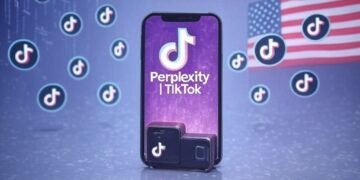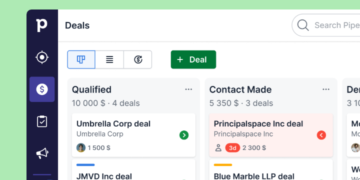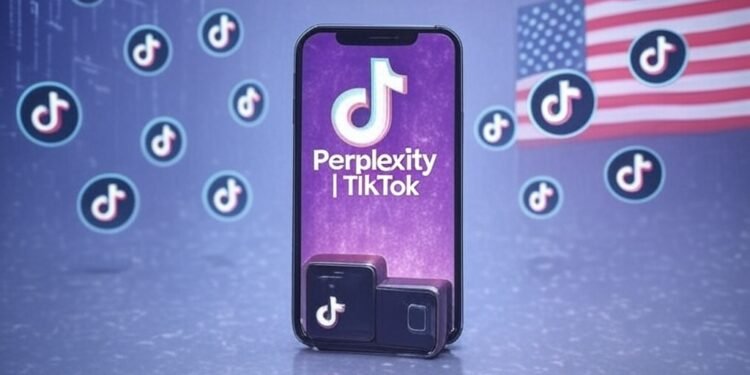As artificial intelligence increasingly becomes a cornerstone of both enterprise infrastructure and daily life, a curious convergence is happening: serious AI meets meme culture. At the center of this crossover stands Perplexity AI, a conversational search engine known for delivering sharp, sourced answers in natural language. Often described as “Google if it talked back with citations,” Perplexity blends the retrieval power of search with a chat interface that feels intuitive and human.
Now, Perplexity is eyeing TikTok—not just as a marketing channel, but as a proving ground for what AI accessibility could look like at scale. Why TikTok? Because it’s where the next billion internet users are already spending their time.
Why TikTok is Strategic, Not Just Trendy
With over 1.5 billion monthly users, TikTok isn’t merely a content platform—it’s the algorithmic engine that dictates global trends, language, and buying behavior, particularly among Gen Z and younger Millennials. The attention economy has shifted, and Perplexity knows that making AI culturally relevant requires showing up where attention lives.
Unlike LinkedIn or X (formerly Twitter), TikTok isn’t yet crowded with AI-native brands. ChatGPT isn’t natively on the platform. Google’s Gemini? Absent. Perplexity has the opportunity to pioneer what AI interaction on short-form video looks like—and in doing so, potentially lock in cultural mindshare for years.
Who Is Perplexity AI, Really?
Founded by former AI leads from OpenAI, Meta, and Quora, Perplexity uses a sophisticated retrieval-augmented generation (RAG) framework. That means when you ask it a question, it doesn’t just guess—it searches authoritative sources in real time, then builds a response with citations you can verify. It’s fast, accurate, and refreshingly transparent.
The model excels at queries like:
- “Summarize the latest in protein folding research.”
- “Compare Tesla’s and Rivian’s Q4 financials.”
- “Write a haiku about quantum computing.”
But while power users love Perplexity for its rigor, it risks being siloed as a tool for academics and startup teams. TikTok offers a way to break out of that niche.
Five Strategic Moves Perplexity Could Make on TikTok
1. Edutainment, But Make It Fast
TikTok users crave quick value. A creator might say, “Hey Perplexity, why do cats knock things off shelves?”—and within 10 seconds, the AI responds with a concise explanation involving prey drive, attention-seeking, and environmental stimulation, all backed by sources. This type of rapid “microlearning” could be packaged as a series: Ask Perplexity Anything.
Imagine Perplexity integrated into trends like “GRWM” (Get Ready With Me), where creators casually drop science trivia mid-routine. Or duet videos where users react to AI-generated answers with surprise, debate, or humor. Done right, this blends AI functionality with pop culture fluidity.
2. Expose the Gears: Radical Transparency
Gen Z doesn’t just want smart tools—they want to understand how those tools work. Perplexity could lift the veil on AI architecture by producing videos like “How We Fine-Tune Our Model” or “What Happens When You Ask a Biased Question?”
Behind-the-scenes clips from data scientists, ethical AI specialists, or even product designers could humanize the brand. TikTok’s raw, unfiltered aesthetic is ideal for content that feels authentic over polished. Think Humans of AI, but in vertical video.
3. Interactive Series That Crowdsource Curiosity
Campaigns like #StumpPerplexity would encourage users to throw their most absurd, poetic, or complex questions at the AI. The community engagement angle is huge: answer the top comments in a follow-up video, shout out clever users, or even let the AI rate the creativity of submissions.
By gamifying interaction, Perplexity doesn’t just become a tool—it becomes a character in the TikTok narrative, one that users can challenge, laugh with, and learn from.
4. Unexpected Collabs Across Niches
The smartest TikTok strategy? Don’t stay in the tech bubble. Perplexity should team up with:
- Food creators, busting kitchen myths like “Do carrots actually help your vision?”
- Teachers, showing how students can research topics quickly and responsibly.
- Meme pages, who use the AI to create ironic or surreal scenarios, like “Perplexity explains the psychology of SpongeBob.”
Every niche has its questions—and Perplexity can answer them all. Positioning the AI as a helpful sidekick across verticals expands its relevance.
5. Live Demos: AI in Real-Time
TikTok LIVE is a high-trust format where spontaneity shines. Perplexity’s team could go live weekly to answer questions in real time—whether it’s debugging code, explaining the multiverse, or settling a heated debate over Marvel vs. DC.
Live sessions showcase speed, accuracy, and approachability. They also offer transparency: viewers can see the AI work without edits or cuts, which builds brand credibility.
But It’s Not Just Hashtags and Hype
The opportunity is huge, but the challenges are real.
- Compression of Complexity: TikTok’s 15–60 second format demands that Perplexity simplify without dumbing down. It’s an art form to explain neural networks or climate policy in under a minute—and still be correct.
- Misinformation Risks: The viral nature of TikTok can magnify errors. One shaky claim could spiral. Every video will require vetting, disclaimers, and perhaps even a feedback loop for corrections.
- Operational Load: Producing consistent content requires a shift in org structure. Engineers and product managers may need to be media-trained. Alternatively, Perplexity could build a creative team focused entirely on AI-driven media storytelling.
- Ethical Tensions: What happens when the AI is prompted with loaded questions in a live setting? How does it handle conspiracy theories or personal advice? These aren’t hypotheticals—they’re likely. Perplexity will need content governance guidelines tailored to public-facing interaction.
Bigger Picture: Why This Move Could Reshape Tech Communication
If Perplexity succeeds, it will set a new precedent: AI doesn’t have to hide behind whitepapers and dashboards. It can be present, conversational, and—even in a 30-second video—profoundly useful.
Other companies will follow. Expect more “Explain This in 5 Seconds” challenges. Expect AI literacy to rise—not because people take courses, but because they scroll past it daily. From homework help to startup strategy, TikTok could become a distribution vector for machine learning intuition.
And with that comes responsibility. The lines between accurate assistance, performative entertainment, and persuasive suggestion are thin. Perplexity has the chance to lead not just in visibility, but in setting ethical norms for AI presence in social media.
The TL;DR: Making AI Relatable
Perplexity’s TikTok strategy isn’t just about marketing—it’s about reframing AI from something complex and opaque to something that’s approachable, even fun. When you’re watching a TikTok on “Why bread goes stale faster in the fridge,” and Perplexity pops in with a real, sourced explanation, that’s not just novelty. That’s value.
If the execution lands, Perplexity won’t just be a search engine – it’ll be a household name, known as the AI that lives not in the cloud, but in your feed.
What would you ask Perplexity on TikTok? Drop your wildest questions or campaign ideas in the comments – you might just spark the next big AI trend.















